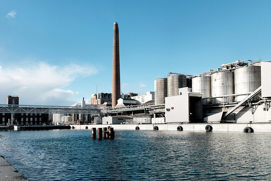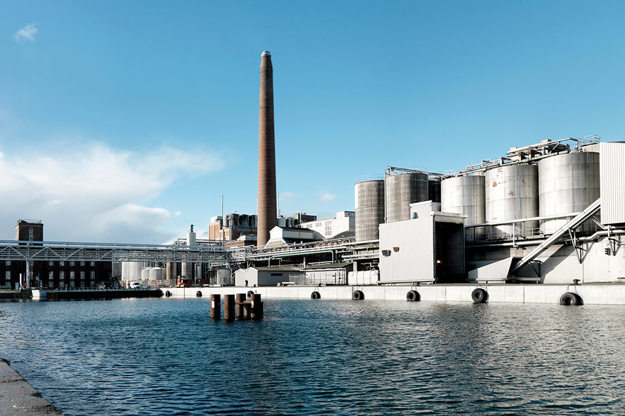In the EU alone, excess heat amounts to 2,860 TWh/y, corresponding almost to the EU’s total energy demand for heat and hot water in residential and service sector buildings*.Yet, this is an energy source that, according to Saška Rihtaršič, Vice President of Danfoss District Energy, is still underutilised. “When the energy crisis hit, we realised that dependency on a single energy source was risky, and we needed to find solutions to be self-sufficient. Reusing waste heat is not only a way to increase our self-sufficiency, it’s also the key to decarbonisation and the green energy transition.”
District heating helps us put waste heat to work
District heating is the infrastructure that allows communities to use excess heat from industry, data centers, large grocery stores, wastewater treatment plants and other sources. There is an exploding market with data centers popping up everywhere in the world, and a byproduct of cooling down CPUs and the data centres is heat. We can reuse that heat when we integrate the wasted heat from the data centres into the district energy networks and thereby having a low carbon source directly integrated. Supermarkets are another example. Integrating waste heat from local supermarkets into a district energy network is extremely simple and can lower the supermarket’s energy prices by up to 70%.
To get the most out of waste heat, we need end-to-end optimisation
Incorporating waste heat is just the first step in unleashing its potential. To achieve true energy efficiency, the district heating system needs to be optimised as well. Digitalisation also plays a key role here, on both the supply and demand sides, as Saška Rihtaršič points out. “On the supply side, we need to make sure that energy production is decarbonised and as efficient as possible. Once the decarbonised district heating reaches the building, it needs to be used optimally, while still maintaining a comfortable environment for the building’s occupants. Digital solutions help us do that.”
For example, Danfoss Titan™ combining best-in-class substations with groundbreaking digital twin technology provides a new, data-driven dimension to the district energy network—ensuring correct commissioning, enhanced performance, and the lowest possible return temperature. The smart substation complements Danfoss’ extensive district energy product portfolio enabling end-to-end optimisation.
Hydronic balancing helps us use excess heat efficiently
End-to-end optimisation also involves improving buildings’ energy efficiency, so heat is used in the best possible way. This is where hydronic balancing comes into play. “This way it enables us to reduce a building’s energy need significantly and still deliver the comfort required,” Saška Rihtaršič says. “It helps us regulate hot water and water used for heating, so we have the right amount of water available in the right place at the right time.”
However, as is the case with excess heat, hydronic balancing is also an area that’s often overlooked. “Many states don’t require digital or even automatic balancing in buildings, even though the technology is readily available, and the payback time is quite short. So, capturing and reusing excess heat is as important as optimising the way we deliver heat to buildings in the district heating system. The next step is to optimise the way buildings use that heat. By taking these steps, we can go a long way towards achieving our decarbonisation goals.
With the right heat planning, we can ensure that we decarbonise our heating systems in a cost-efficient way while making them more resilient to future changes in the heating market.
Related solutions
-
if (isSmallPicture) {


 District heating
District heatingDistrict heating is an environmentally friendly and energy-efficient heating supply that enables a green future with substitution to renewable energy.



